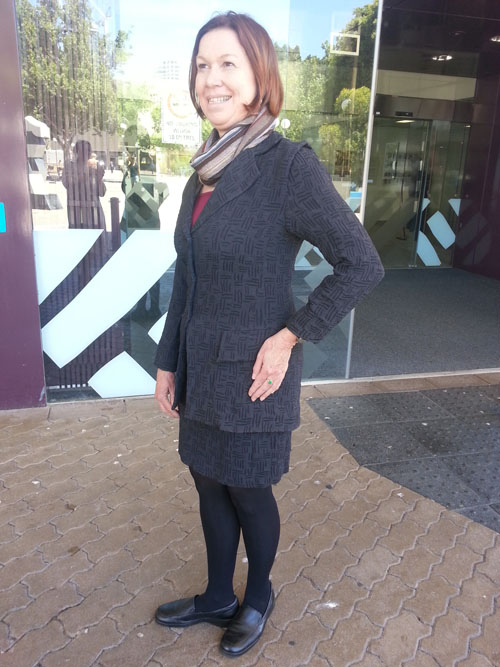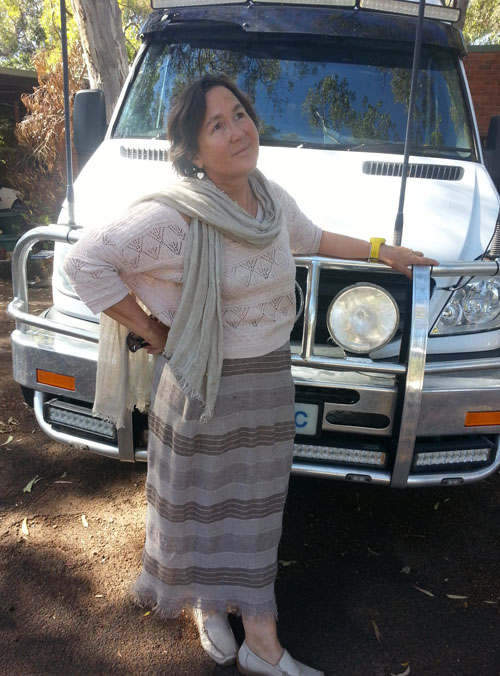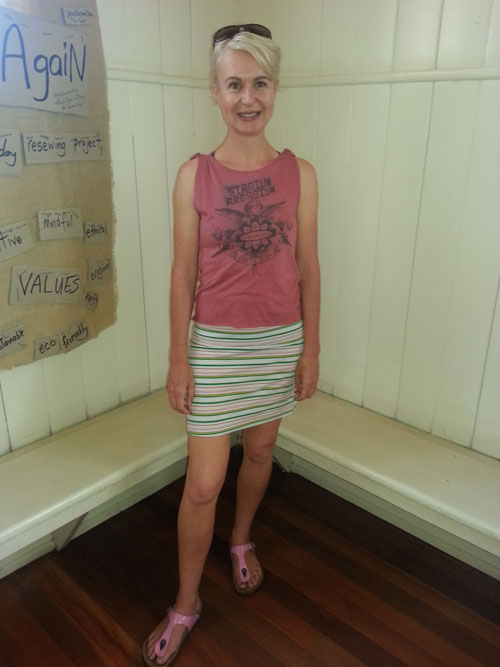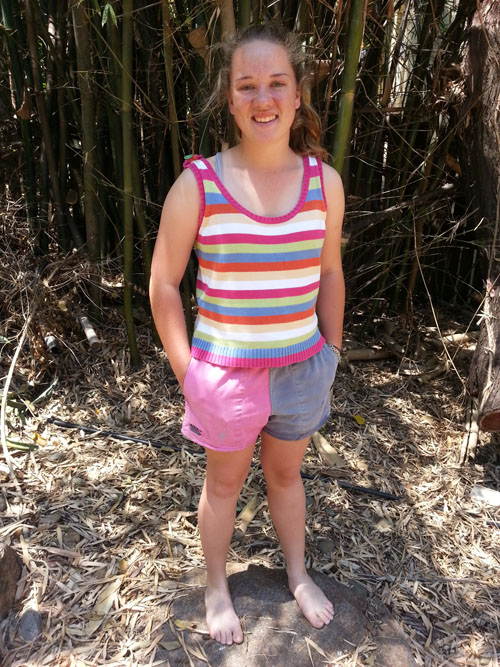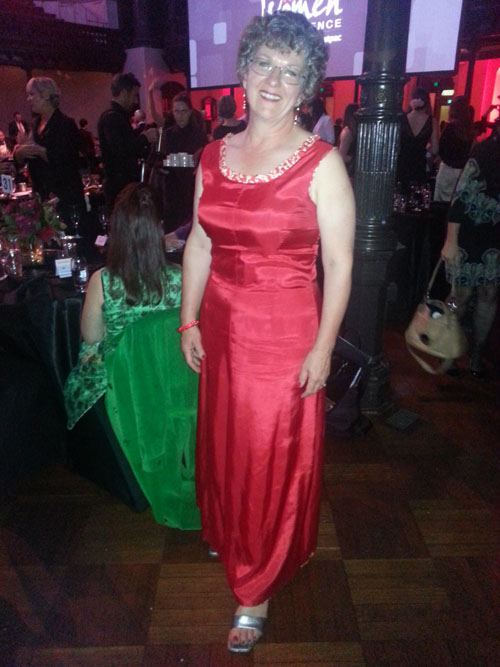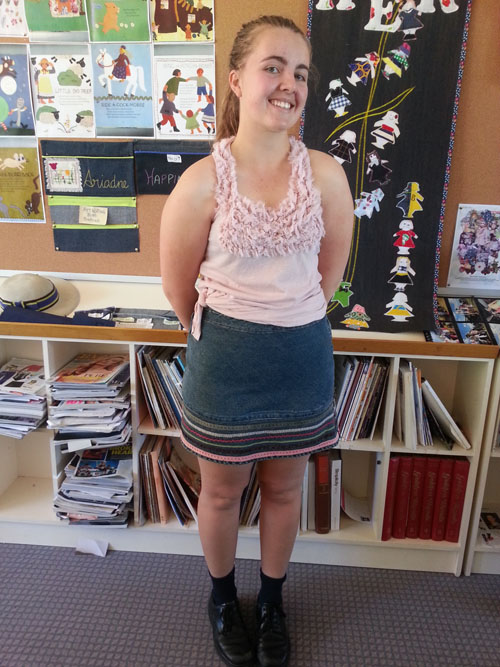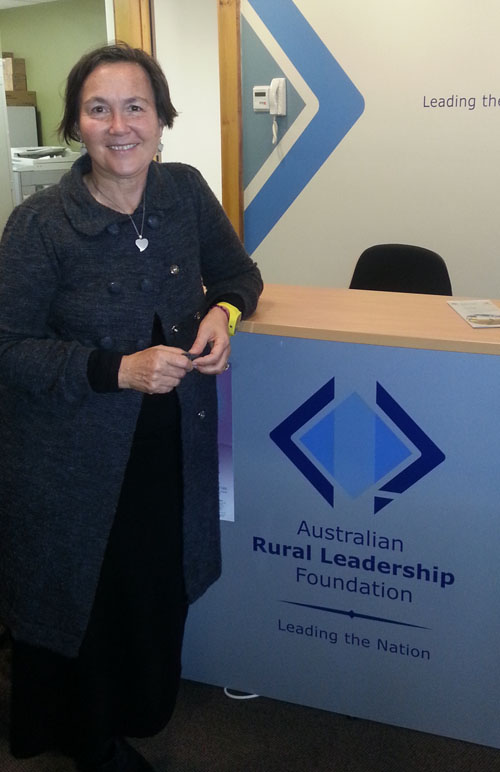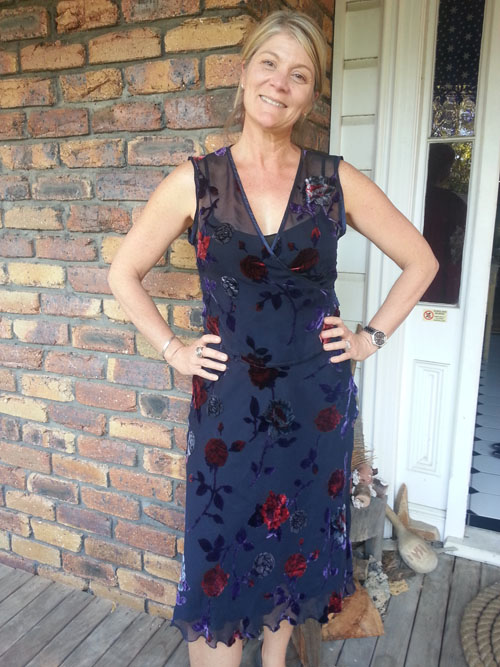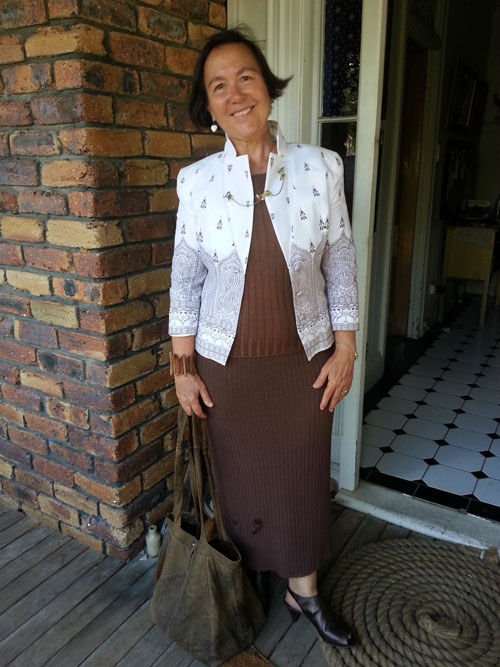 Question everything, never assume, use what you have differently. These are handy thinking habits when it comes to work – and dressing for corporate work, sans black suit.
Question everything, never assume, use what you have differently. These are handy thinking habits when it comes to work – and dressing for corporate work, sans black suit.
Although you don’t want to leave it until the last minute before you are due to rush out the door, one of the simplest ways to upcycle is to play creatively with clothing you already own to see how it might work in ways other than how it originally appeared.
This white and brown jacket has a conventional fold-down collar (see photo below) which I’ve turned upwards to create a much more interesting (my perspective) and angular look. I bought the jacket at a Paddington second-hand shop a few years ago although I swear it had never been worn. There is an incredible amount of pre-loved clothing available (who knew we annually export 70,000+ tonnes of pre-loved clothes see pg 7), I wonder how it is possible to justify buying new unless for a very special occasion? Continue reading
